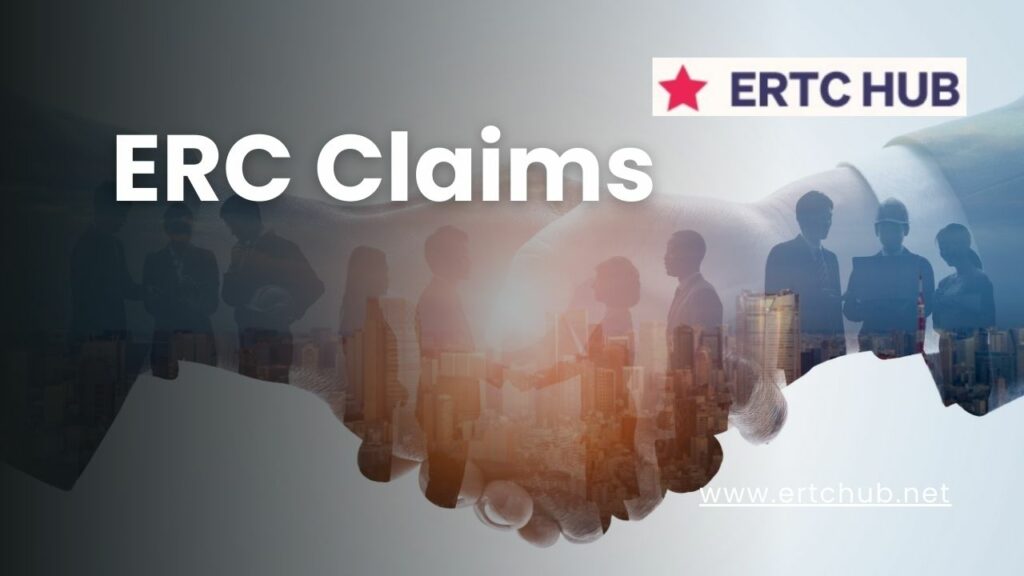The Employee Retention Credit (ERC) is a valuable refundable tax credit that provides financial relief to employers impacted by eligible catastrophes. Are you interested in submitting ERC claims for your business? This credit can be claimed using Form 5884-A and is designed to help employers retain their employees during times when operations cease or gross revenues decrease.

Qualified wages, which include earnings up to $10,000 per employee, can be claimed by eligible employers. For the year 2020, employers can claim up to $5,000 for each employee, and for 2021, up to $7,000 for every qualifying quarter. To ensure eligibility for the ERC, it is crucial to include all qualifying expenses on the PPP debt forgiveness request.
The purpose of the ERC is to support employers who have experienced a complete or partial stoppage of trade or activity due to government directives or a significant drop in gross receipts. This credit is separate from the tax credit for offering paid leave and cannot be claimed for the same pay.
The process for claiming the ERC involves filing Form 941-X for the applicable quarter(s) when qualified wages are received. The IRS provides guidelines on determining the amount of eligible salaries based on how qualifying wages were reported on the PPP debt forgiveness application.
If an employer's payroll tax payments are insufficient to meet the credit, the IRS may provide an advance payment. Employers who obtained a PPP loan can still claim the ERC if they did not claim it for salaries paid with the PPP loan.
the Employee Retention Credit offers a significant opportunity for eligible employers to obtain a refundable tax credit equivalent to 50% of qualified wages. By understanding the guidelines and properly filing the necessary forms, employers can take full advantage of this credit and alleviate some of the financial burdens brought on by eligible catastrophes.

The Employee Retention Credit (ERC) is a valuable tax credit that can provide eligible employers with substantial financial relief. To qualify for the ERC, certain criteria must be met.
To be considered an eligible employer, you must have experienced either a complete or partial stoppage of trade or business operations due to government directives. This can include mandatory closures or restrictions that significantly impacted your ability to conduct business. Alternatively, you may be eligible if you experienced a significant decrease in gross receipts during a calendar quarter compared to the same quarter in the previous year.
A complete or partial stoppage of trade or business can occur when operations cease entirely or are significantly limited due to government-mandated restrictions. This can include closures of physical locations, restrictions on customer capacity, or limitations on the provision of certain services.
To qualify for the ERC based on a significant drop in gross receipts, your gross receipts for a calendar quarter must be less than 50% of the gross receipts from the same quarter in the previous year. Once this threshold is met, you remain eligible until your gross receipts reach 80% of the gross receipts from the same quarter in the prior year.
As an eligible employer, understanding the criteria for the ERC is crucial in order to benefit from this valuable tax credit. By meeting the qualifications outlined above, you can take advantage of the ERC and obtain the financial relief you need.
The Employee Retention Credit (ERC) is a valuable tax credit that provides financial relief to eligible employers who have faced difficulties due to the COVID-19 pandemic. To ensure eligibility for the ERC, it is crucial to include all qualifying expenses on the PPP debt forgiveness request. Additionally, employers who obtained a PPP loan can still claim the ERC if they did not already claim it for salaries paid with the loan.
Qualified wages are the earnings, up to $10,000 per employee, provided to employees who are unable to deliver services due to operations ceasing or gross revenues decreasing. These wages must have been paid between March 12, 2020, and January 1, 2021. It is important to note that the ERC cannot be claimed for wages used to obtain other tax credits, such as the tax credit for offering paid leave.
Employers can claim up to $5,000 for each employee for the entire year of 2020 and up to $7,000 for each qualifying quarter in 2021. This allows eligible employers to access the maximum credit while supporting their workforce during these challenging times.
To claim the ERC, employers must file Form 941-X for the applicable quarter(s) when qualified wages are received. In cases where the employer's payroll tax payments are insufficient to meet the credit, the IRS may provide an advance payment.
understanding the definition of qualified wages and the limitations on the amount per employee is essential for employers seeking to benefit from the Employee Retention Credit. By following the guidelines provided by the IRS and including all necessary information, eligible employers can access this valuable tax credit and receive the financial assistance they need.

The Employee Retention Credit (ERC) is a valuable tax credit that offers qualified employers a refundable credit of 50% of eligible wages paid to employees between March 12, 2020, and January 1, 2021. It is important to note that the ERC is separate from the tax credit for offering paid leave, and these two credits cannot be claimed for the same compensation.
For the year 2020, employers can claim up to $5,000 for each employee. In 2021, they can claim up to $7,000 for each qualifying quarter. This credit provides significant financial relief for businesses impacted by eligible catastrophes.
To claim the ERC, employers need to complete and file Form 5884-A, highlighting their eligibility for the credit due to the impact of eligible catastrophes. Furthermore, when qualified wages are received, employers must file Form 941-X for the applicable quarter(s). It is crucial to accurately report all qualified expenses on the PPP debt forgiveness request to ensure eligibility for the ERC.
It is essential to understand that the ERC is distinct from the tax credit for offering paid leave. Employers should carefully assess which credit is applicable for their specific situation and ensure they only claim the appropriate credit.
By following the guidelines provided by the IRS, employers can accurately determine the amount of eligible salaries for the ERC. If an employer has received a PPP loan but did not claim the ERC for salaries paid with the loan, they can still claim the credit.
Employers experiencing a complete or partial stoppage of trade or activity due to government directives or a significant drop in gross receipts are eligible for the ERC. In cases where payroll tax payments are insufficient to cover the credit, the IRS may offer an advance payment. Additionally, eligible employers can decrease their employment tax contributions to gain immediate access to the maximum credit amount.
Claiming the ERC can provide substantial financial support to qualifying businesses impacted by eligible catastrophes, helping them retain employees and navigate through challenging times.
The Employee Retention Credit (ERC) and the Paycheck Protection Program (PPP) are two critical components of government assistance aimed at supporting employers amidst the economic challenges caused by the COVID-19 pandemic. While both programs provide financial relief, it is important to understand the guidelines and requirements for claiming the ERC if you have obtained a PPP loan.
Employers who have received a PPP loan are still eligible to claim the ERC for wages that were not covered by the loan. If you did not claim the ERC for salaries paid with the PPP loan, you can still apply for the credit for those eligible wages.
To claim the ERC, it is crucial to ensure that you include all qualifying expenses on your PPP debt forgiveness application. The IRS provides specific guidelines on determining the amount of eligible salaries based on how qualifying wages were reported on the forgiveness application. It is vital to accurately report and document this information to ensure eligibility for the ERC.
By understanding the relationship between ERC and PPP, employers can take full advantage of the available financial assistance. Whether you have obtained a PPP loan or not, the ERC offers a valuable opportunity to claim tax credits for the wages you provided to your employees during the specified period. Make sure to fulfill the requirements, report accurate information, and follow the necessary procedures to access this beneficial program.
The process for claiming the Employee Retention Credit (ERC) involves filing Form 941-X for the applicable quarter(s) when qualified wages are received. This form allows employers to amend their previously filed Form 941 to claim the credit. It is important to ensure that all qualifying expenses are included on the PPP debt forgiveness request to ensure eligibility for the ERC.
To claim the ERC, employers must complete and file Form 941-X, which is used to correct errors on previously filed Form 941. This form must be submitted for the applicable quarter(s) in which qualified wages were paid. It is crucial to accurately report the eligible wages to maximize the credit amount while complying with IRS guidelines.
To be eligible for the ERC, it is essential to include all qualifying expenses on the PPP debt forgiveness application. This ensures that employers can claim the credit for qualified wages that were not used for loan forgiveness. By accurately reporting these expenses, employers can optimize their eligibility for both the PPP loan forgiveness and the ERC.
By following the proper processes and guidelines, eligible employers can claim the Employee Retention Credit and reduce their employment tax contributions accordingly. This credit provides significant financial relief for businesses impacted by government directives or a significant decrease in gross receipts. Remember, the ERC can only be claimed for qualified wages that were not used for the tax credit for offering paid leave.
As an employer, it is crucial to understand the guidelines set forth by the Internal Revenue Service (IRS) when determining the amount of eligible salaries for the Employee Retention Credit (ERC). These guidelines primarily rely on how qualifying wages were reported on the Paycheck Protection Program (PPP) debt forgiveness application.
To ensure eligibility for the ERC, it is important to include all qualifying expenses on the PPP debt forgiveness request. Qualified wages refer to the earnings provided to employees, up to $10,000 per employee, who are unable to deliver services due to operations ceasing or gross revenues decreasing.
When determining eligible salaries for the ERC, it is essential to consider how these wages were reported on the PPP debt forgiveness application. Employers can claim up to $5,000 for each employee for the entire year of 2020 and up to $7,000 for every qualifying quarter in 2021.
Moreover, it is crucial to understand that the ERC is separate from the tax credit for offering paid leave, and both credits cannot be claimed for the same wages.
Eligible employers, including those who experienced a complete or partial stoppage of trade or activity due to government directives or a significant drop in gross receipts, have the opportunity to decrease their employment tax contributions to gain instant access to the maximum credit.
To claim the ERC, employers should file Form 941-X for the applicable quarter(s) in which qualified wages were received. By following these guidelines, employers can confidently navigate the process of determining eligible salaries for the ERC and take advantage of this valuable tax credit.
I hope this article has provided you with a comprehensive understanding of the Employee Retention Credit (ERC). The ERC is a refundable tax credit that offers eligible employers a 50% credit on qualified wages paid to employees between March 12, 2020, and January 1, 2021. To qualify for the ERC, employers must have experienced a complete or partial stoppage of trade or activity due to government directives or a significant drop in gross receipts.
Claiming the ERC can provide significant benefits for eligible employers. The credit can reach up to $5,000 per employee for the entire year of 2020 and up to $7,000 for each qualifying quarter in 2021. By decreasing employment tax contributions or obtaining an advance payment from the IRS, employers can gain instant access to the maximum credit.
However, it is essential to carefully navigate the claiming process. Employers who obtained a PPP loan must ensure they did not claim the ERC for salaries paid with the loan. It is also crucial to include all qualifying expenses on the PPP debt forgiveness request to guarantee eligibility for the ERC.
To claim the ERC, employers must file Form 941-X for the applicable quarter(s) when qualified wages were paid. Additionally, employers impacted by eligible catastrophes can claim the ERC using Form 5884-A.
By understanding the eligibility requirements and following the necessary steps, eligible employers can take advantage of the Employee Retention Credit to ease their financial burdens during these challenging times.